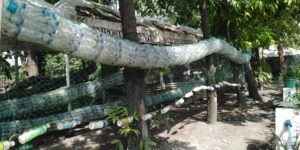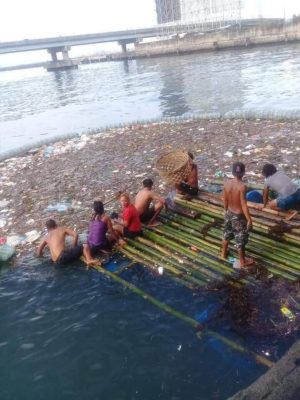Fencing the waters
There are five major rivers traversing the city of Cebu; and all of them are heavily polluted.
Although the Department of Environment and Natural Resources (DENR) denied in 2017 that the rivers are all biologically dead, there appears to be no sign of aquatic life.
Cebu City has five river systems— Buhisan, Bulacao, Butuanon, Guadalupe and Lahug.
These muddy rivers are spread out across the city with Butuanon considered as biologically dead since 1992.
Instead of freshwater fish, what thrives in the rivers are garbage thrown by residents living along the banks.
For years, the city has found it difficult to penalize the households responsible for the filth.
But the Cebu City Environment and Natural Resources Office (CCENRO) vows that it would not stop looking for solutions to minimize, if not fully eradicate, the pollution.
There is no one-stop-solution to rehabilitate Cebu City’s rivers, said CCENRO Special Program Head Joelito Baclayon.
CCENRO has initiated various projects including enlisting scuba diving volunteers to clean up the riverbeds.
Biofences
The most recent project undertaken by CCENRO is the installation of floating fences along estuaries and coastal areas.
The so-called ‘biofences’ are intended to block floating garbage, upstream, from flowing out into the sea by trapping them in one area so that local workers and volunteers could collect them.
The fences comprise of at least 200 plastic water bottles placed inside a fishing net, laid out underneath the water, to serve as a makeshift floater.
The garbage, trapped along the net, is collected daily by workers and institutional volunteers such as students.
According to CCENRO head, Nida Cabrera, the fences were designed based on the biofences that she saw on her trips to countries like Japan.
“We observed that the biggest problem in our rivers is the garbage. Even if the DPS (Department of Public Services) cleans the rivers, after a month,
they become dirty again,” Cabrera said in Cebuano.
The biofences are cheap but sturdy, can withstand different weather conditions and can last up to three months.
It takes around 3-4 days to finish one 10-meter biofence, the standard length to fit estuaries and larger creeks.
“If they want to donate plastic bottles, they can call CCENRO so we can pick up the bottles. If they want to bring the bottles to us, they can also drop them off at the Septage Treatment Plant at the North Reclamation Area,” said Cabrera.
The CCENRO continuously needs plastic bottles as more biofences are needed to expand the project.

A closer look at the “bio fence” (below right) comprised of plastic bottles bunched together in a fishnet to form a long pipeline used by local workers (above left) to corral and keep garbage from floating away in the coastal waters.
Fenced rivers
As of September, three coastal areas had been fenced including the Pasil fishport and a portion of Barangay Sawang Calero.
These areas are open to the sea thus trapping garbage before they can further pollute the waters.
Cabrera said that they will be installing more biofences in other riverways including Tejero-Tinago creeks and Mabolo. The length of the biofences will depend on the width of the rivers.
CCENRO plans to fence a span of about 100 meters for each river to detect areas that accumulate the most garbage and find ways to either penalize or rehabilitate residents in the coastal areas.
“Because of the biofences, the residents could no longer deny that the garbage came from them since the garbage accumulated in their area. They cannot anymore say that the garbage came from the upper streams because the upper streams have fences as well,” said Cabrera.
Livelihood
Aside from keeping the waters clean, the biofences also provide a new kind of livelihood for residents living along riverbanks.
Cabrera said that coastal villages are required to hire people who could monitor and maintain the fences.
In exchange for three kilos of rice and three canned meatloafs per day, a volunteer collects garbage trapped in the fences daily.
The homeless and the jobless are prioritized in the city’s food for garbage exchange program.
Baclayon said the program seeks to provide some kind of livelihood to the homeless to motivate them to work for the community instead of begging on the streets.
Institutions such as schools that are members of the Cebu Academic Network (CAN) also volunteer to help maintain the biofences in their adopted communities.
According to Baclayon, while the biofences offer a great solution to water pollution, it is only when the residents are truly ready to change their ways can Cebu City’s rivers begin to rehabilitate and breath again.
Disclaimer: The comments uploaded on this site do not necessarily represent or reflect the views of management and owner of Cebudailynews. We reserve the right to exclude comments that we deem to be inconsistent with our editorial standards.

